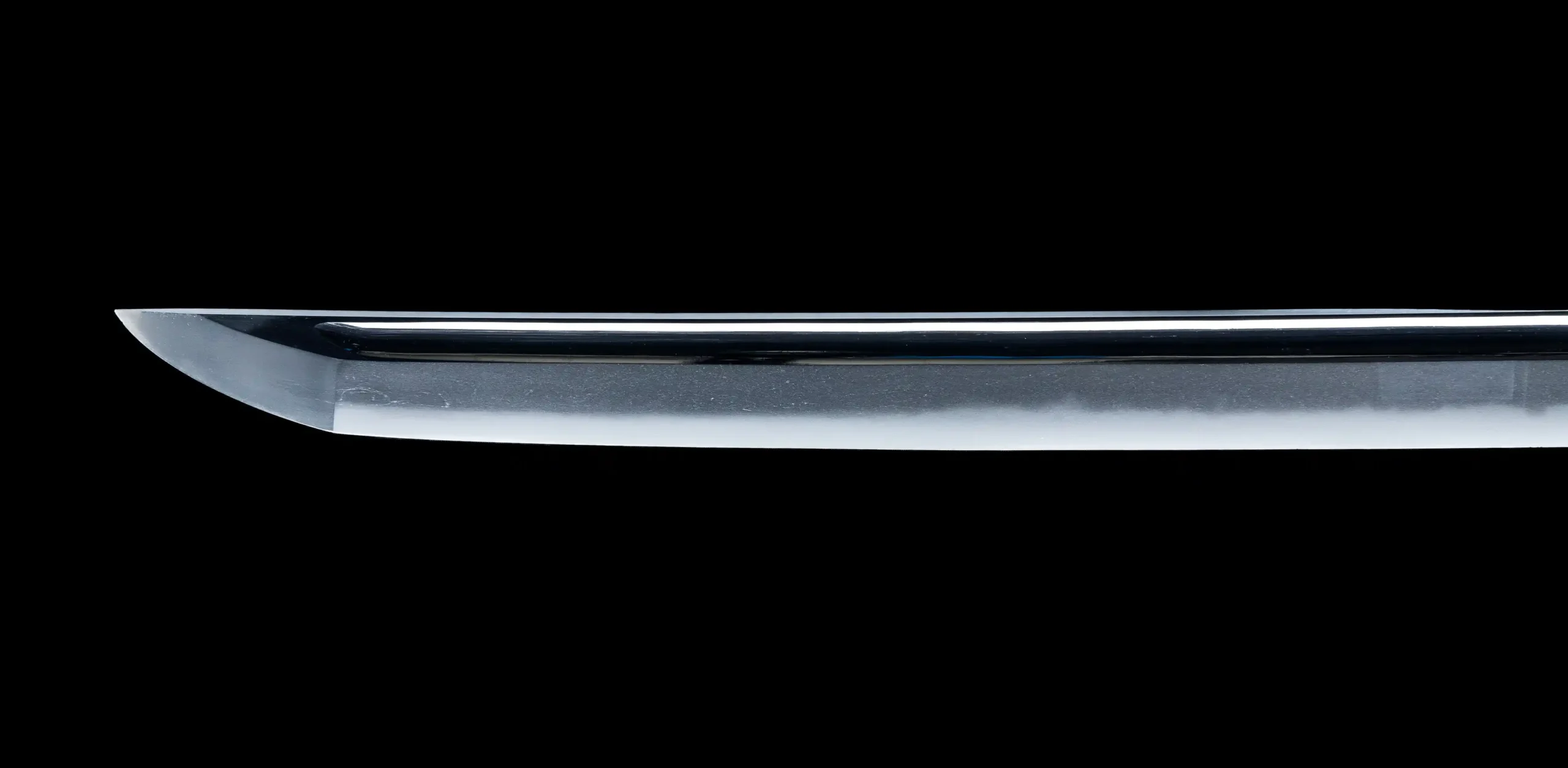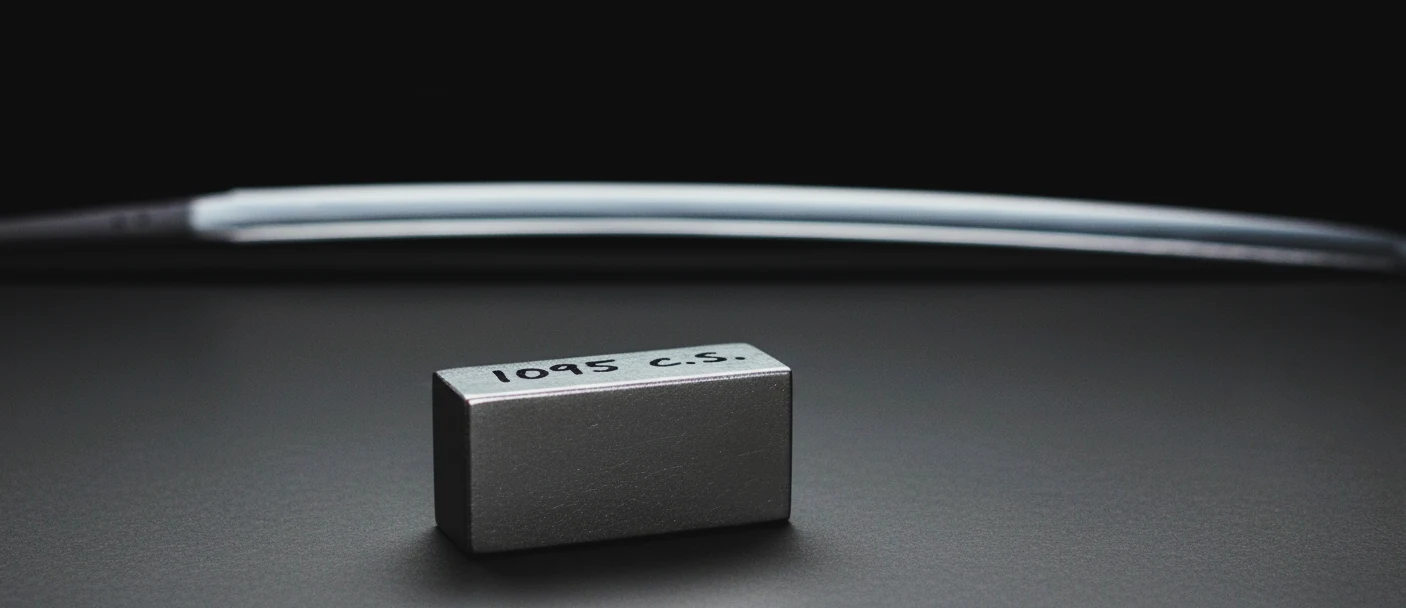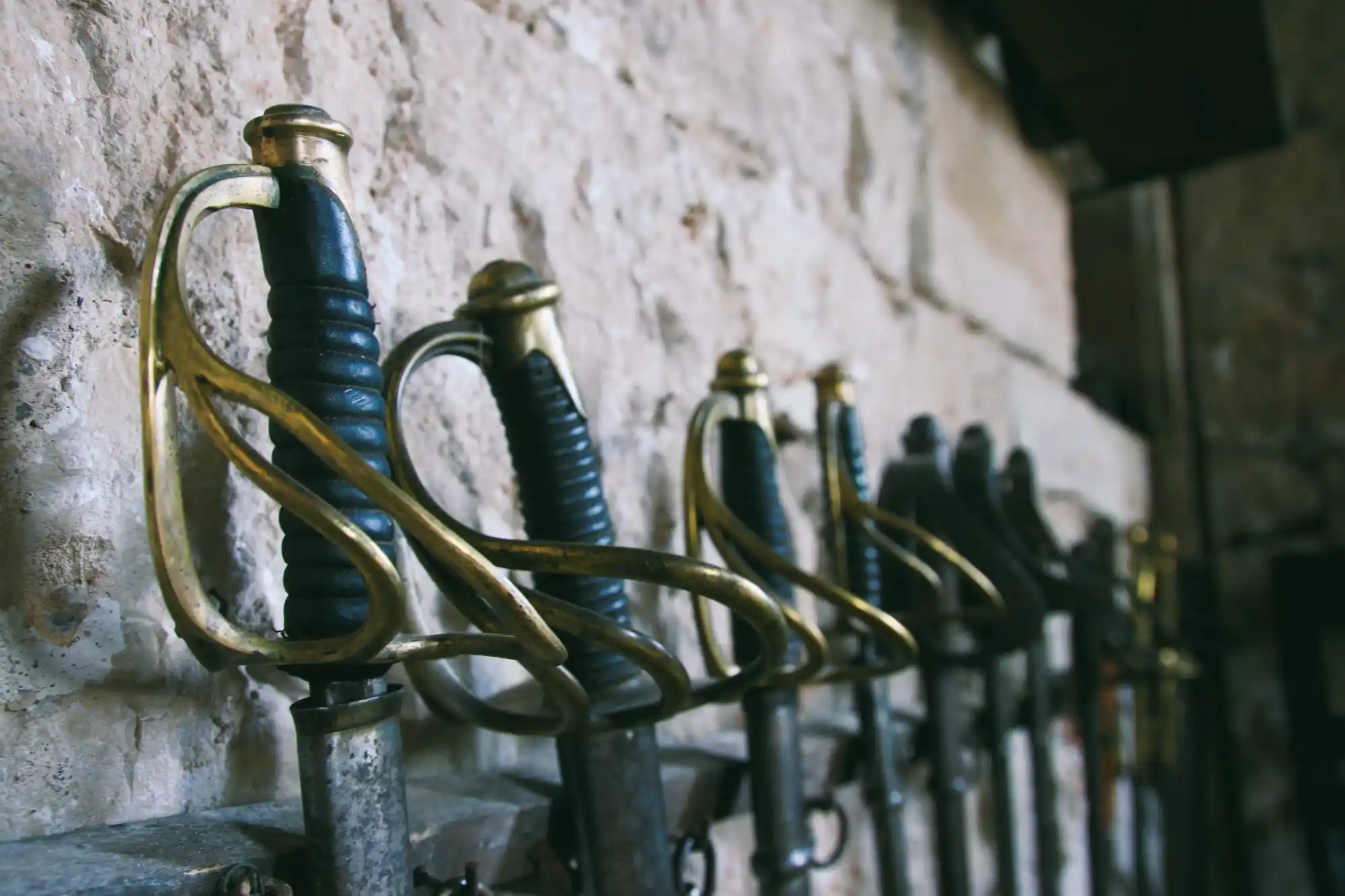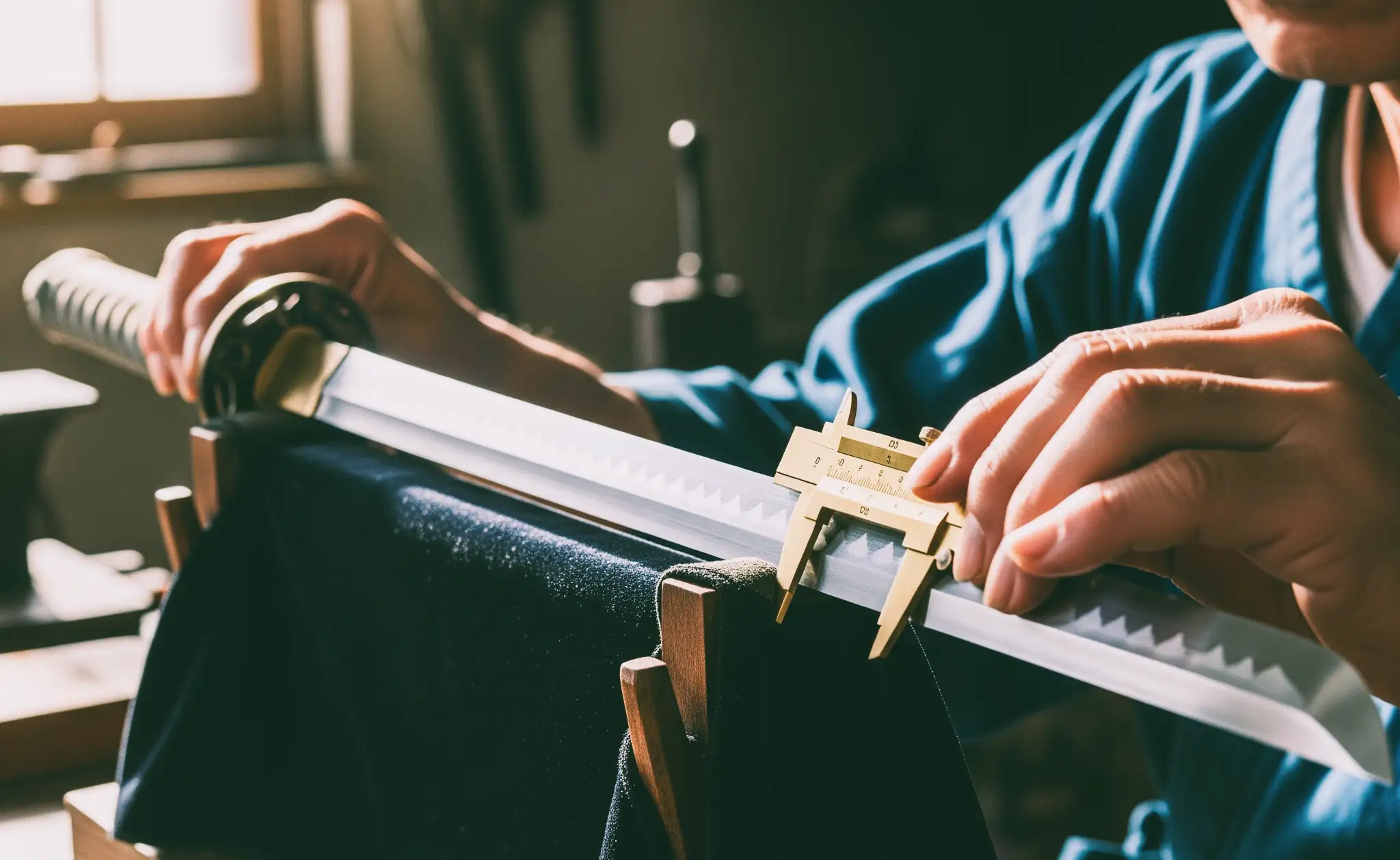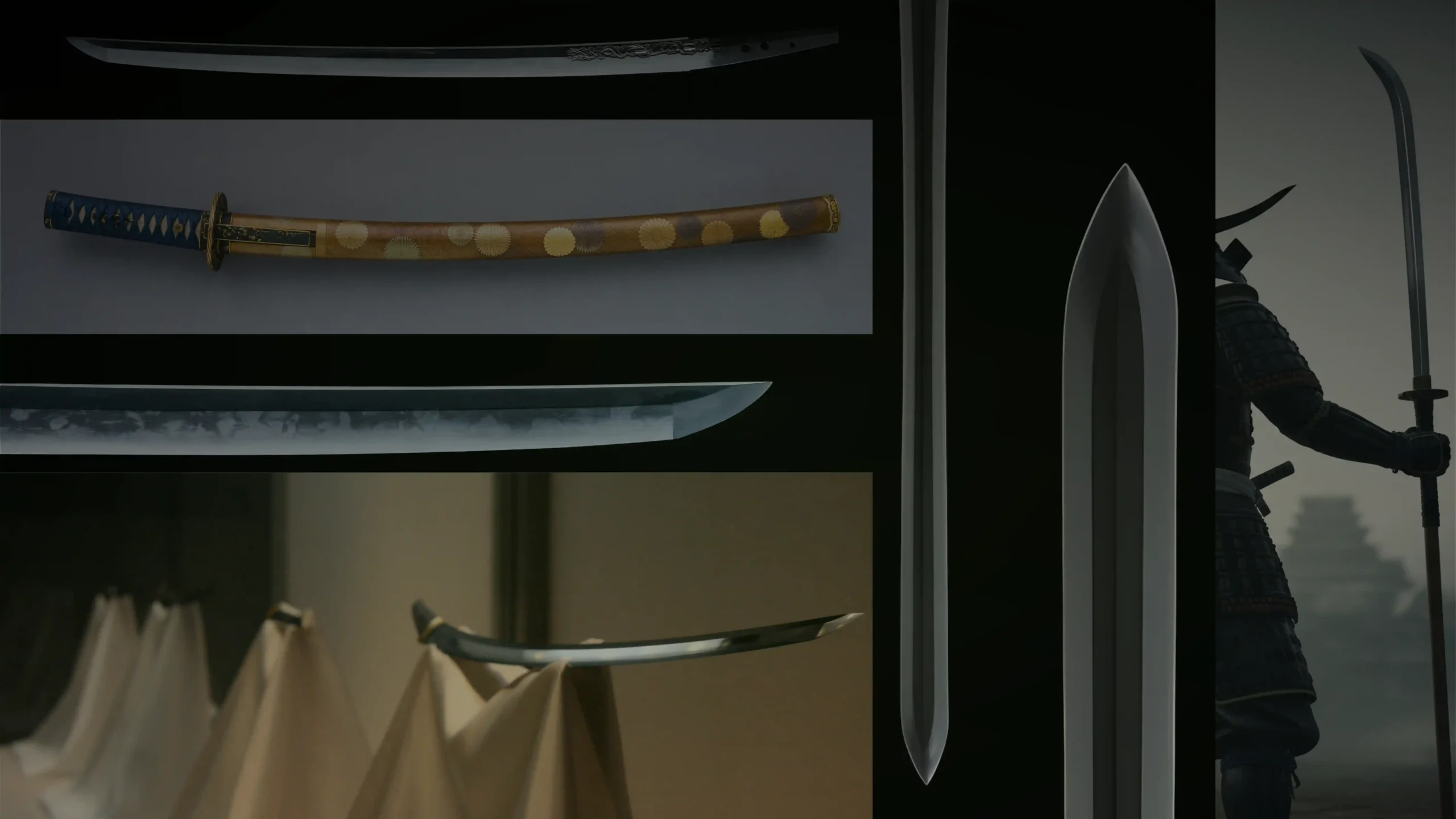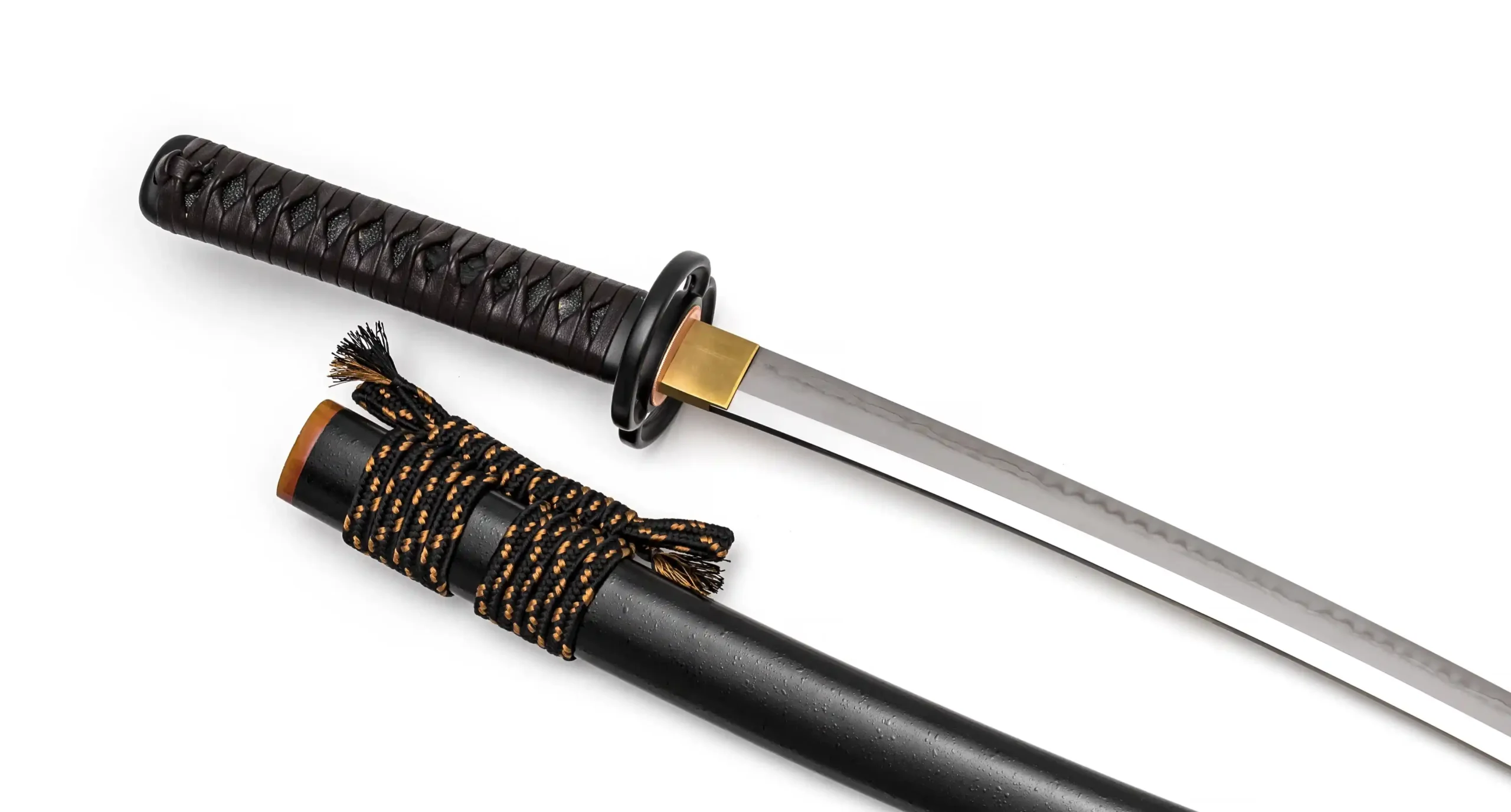We may earn revenue from the products available on this page and participate in affiliate programs. Learn more >
The katana and nodachi (or odachi) are two Japanese sword types and two of the best samurai swords used during the same period, each for different purposes. While they share some similarities in design, they also have distinct features. This article will cover their similarities, differences, uses, and which one might be better in battle. First, let’s take a look at their history.
Historical Background
| Feature | Nodachi | Katana |
| Period | Kamakura Period (1185–1333) | Kamakura (1185-1333 AC) |
| Blade | Single edged – Curved | Single edged – Curved |
| Handle | Two-handed (longer) | Two-handed |
| Blade Length | 100 – +120 cm (40- +47inch) | 60-80 cm (24-31 inch) |
| Used by | Samurai class | Samurai class |
The development of Samurai swords began with the tachi during the Heian period (794–1185), a deeply curved blade optimized for slashing from horseback. It was the dominant sword of the samurai class as Japan’s warfare centered around cavalry. However, as battles became more focused on infantry engagements, the need for more versatile and practical weapons arose.
This shift laid the groundwork for both the katana and nodachi to emerge during the Kamakura period (1185–1333). So, basically in this period, katanas began to emerge while nodachi became popular.
The nodachi was a weapon designed for open-field battles and particularly useful for infantry facing cavalry. So, the difference is that nodachi was taken and used by samurai only in big battles. This is because it was impossible to carry in everyday usage. It was usually carried behind the back or by a companion.
In contrast, the katana emerged as a more practical, versatile weapon that came in response to the need for a weapon that could be drawn quickly in close combat. Its shorter length and lighter design made it suitable for both duels and close-quarters combat, mainly for cutting and slashing through enemies. Later it also became a symbol for the samurai’s social status, carried daily as a mark of their honor and rank.
Design and Characteristics
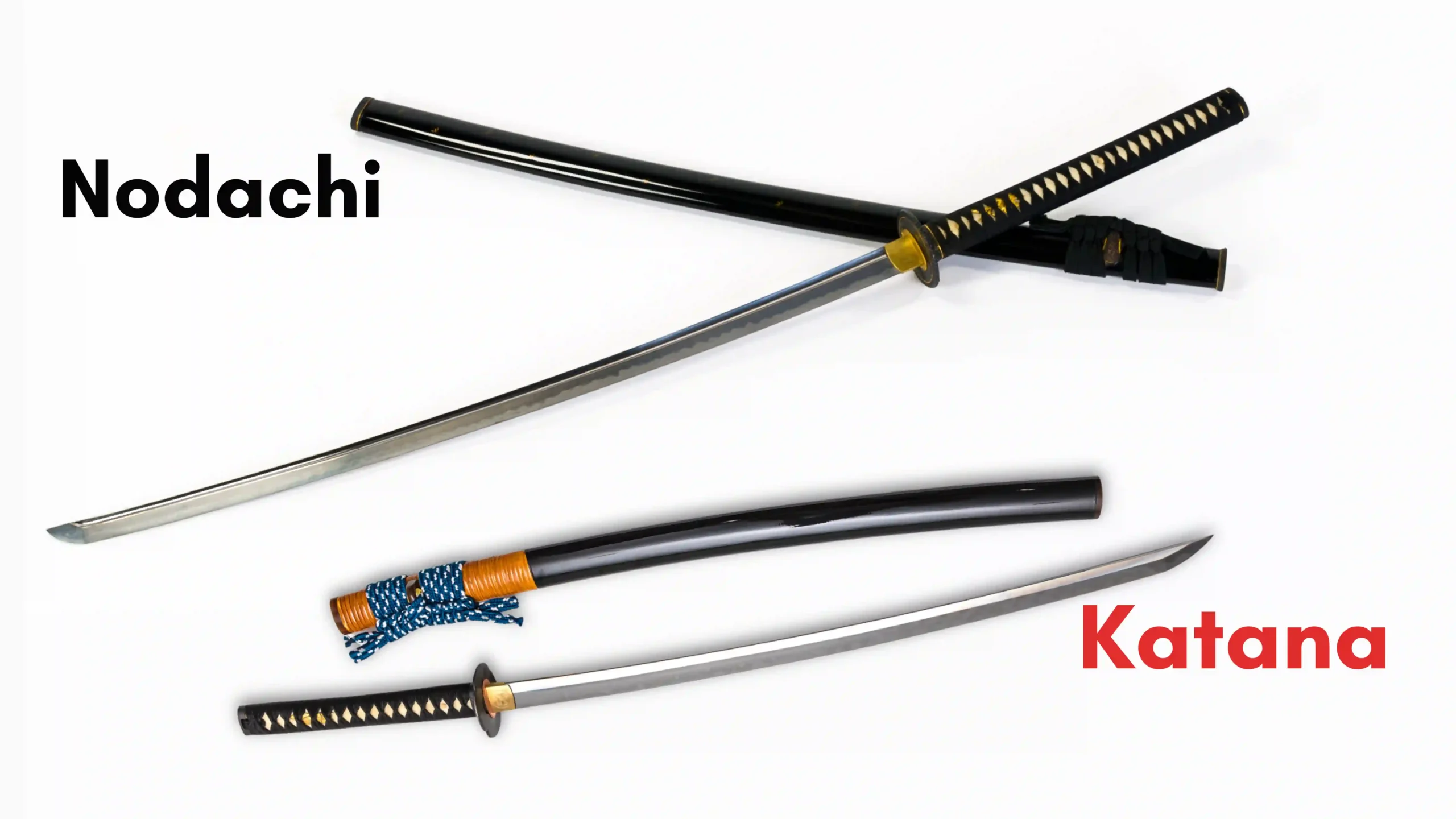
Katana
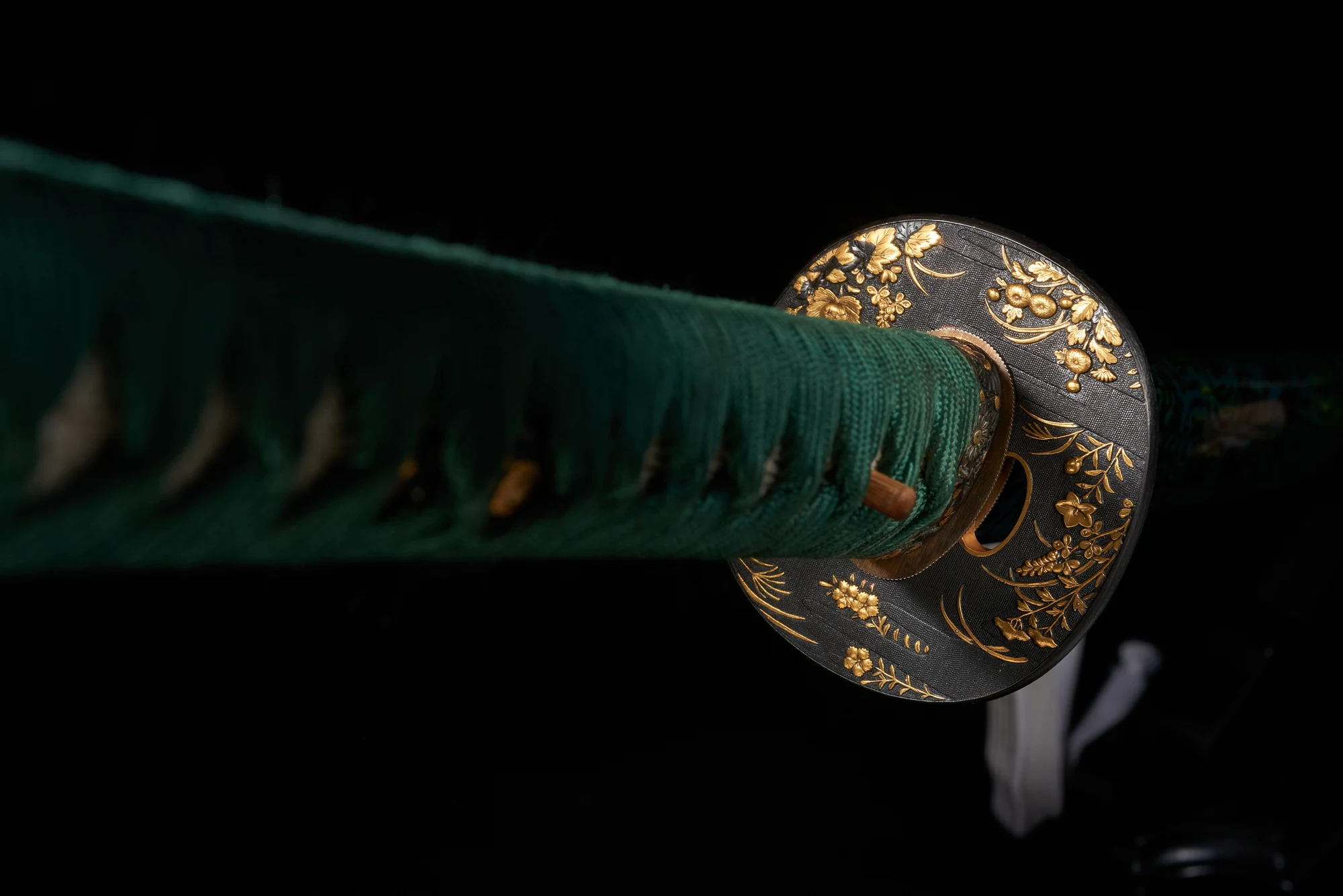
A katana is a Japanese longsword with a blade length about 60-80 cm (24-31 in) long. The blade is curved, single-edged, and very sharp. The handle, or tsuka, is usually around 10 to 12 inches long and made for two-handed use. It is secured with mekugi pegs, usually two, and wrapped with rayskin (same) and silk ito. Many samurai katanas have a detailed guard and a visible hamon pattern on the blade.
This sword’s design is both functional and elegant, perfectly suited for the close-quarter combat that samurai often engaged in.
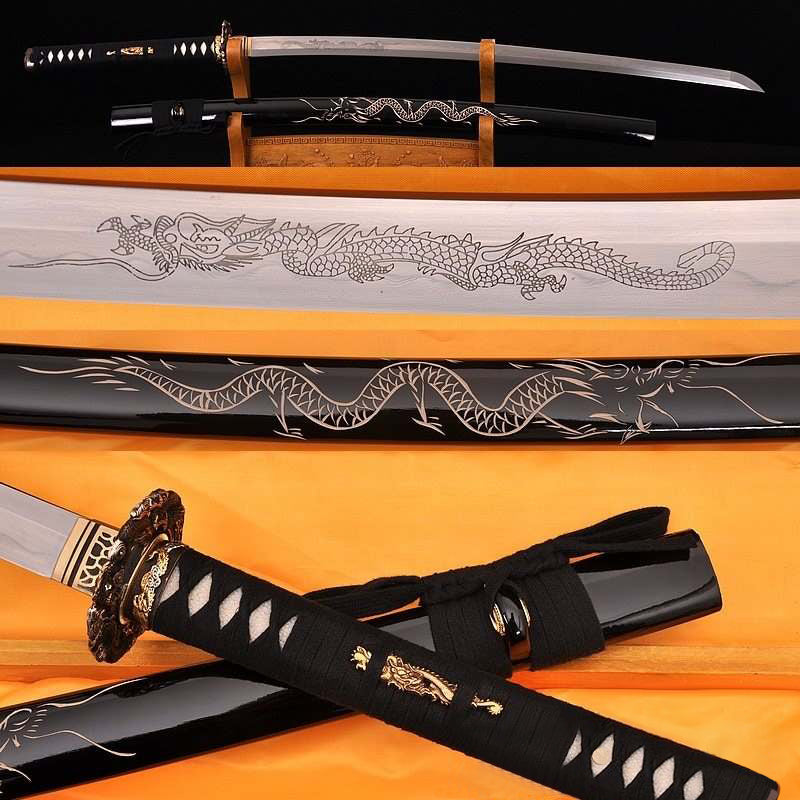
Nodachi
The nodachi, on the other hand, is a massive Japanese greatsword, with a blade that typically exceeds 40 inches and can be as long as 50 inches or more. This immense size makes it significantly larger and heavier than all other samurai swords.
It features a gentle curve, similar to the katana, but its greater length and weight give it more cutting power, especially in wide, sweeping strikes.
The tsuka of a nodachi is proportionally longer, allowing for a longer two-handed grip that is necessary to control such a large weapon. Because of its size, this sword was often carried over the shoulder or by an assistant, rather than at the waist.
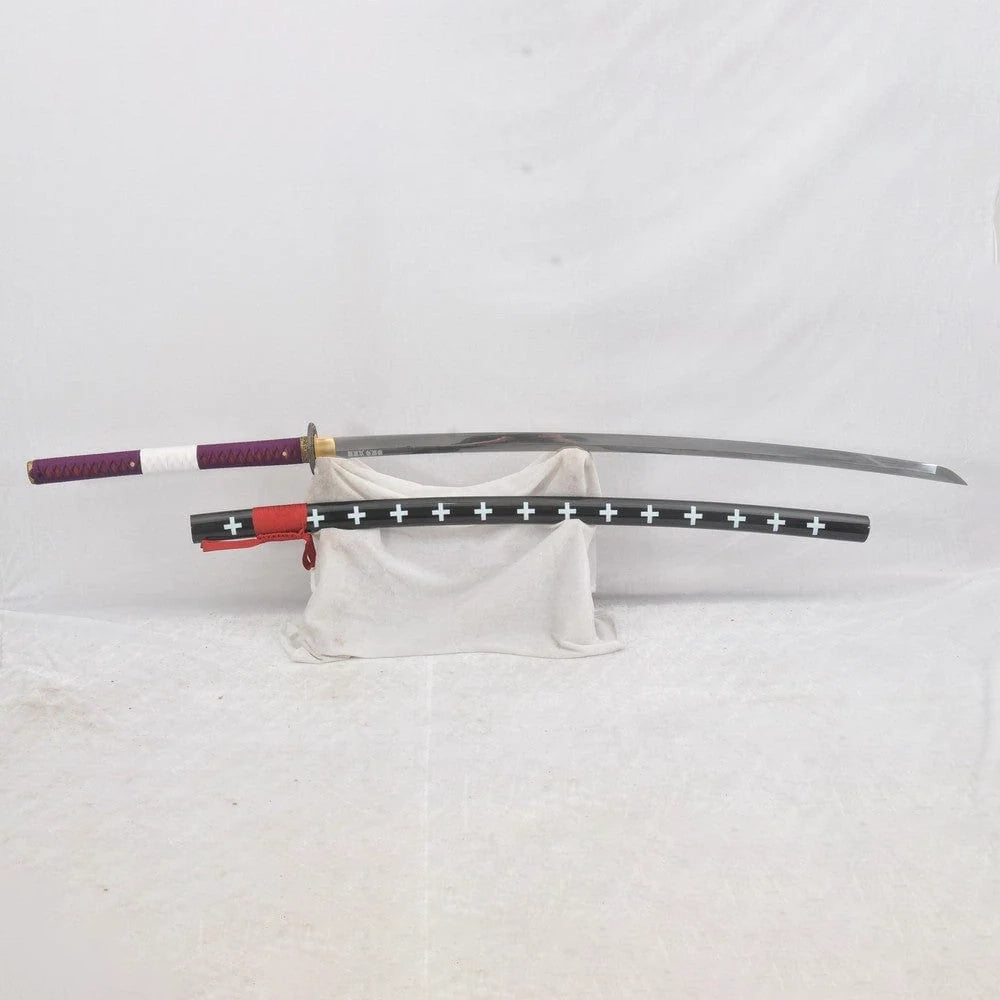
The katana is a Japanese longsword ranging from 30-40 inches in length, while the nodachi (or odachi) is a larger type often exceeding 50 inches and is heavier and harder to use. They share the same design and are made using the same traditional techniques.
Similarities and Differences
The only fiscal difference you’ll notice is length. This includes both a longer blade and handle. This is how you can tell if you are looking at a katana or a nodachi. In historical examples, another difference is that nodachi was built with more functionality in mind. So, they may not be as highly elaborated. While, modern types share almost everything.
Nodachi vs Katana
When comparing who would win in a fight, the outcome depends heavily on the wielder’s skill, strategy, and the situation at hand.
As we mentioned in the previous article Samurai Sword vs Ninjato, ninjatos, despite being shorter or lower quality, again can offer significant advantages in close-quarters or confined spaces compared to other samurai sword types.
However, the advantages one might have in certain scenarios could turn into disadvantages in others. Here are some advantages and disadvantages both weapons have:
| Advantages | Disadvantages | |
|---|---|---|
| Katana | Speed Versatility Ease of Carry Quick Draw Maneuverability Precision Dual-Wielding | Limited Reach Less Power Requires Skill Vulnerability to Armor |
| Nodachi | Extended Reach High Power Wide Strikes Intimidating Presence | Heavy Weight Difficult to Carry Slow Requires Space Less Maneuverability |
Battle Scenarios
This table showcases some battle scenarios and the winner based on our opinion.
| Scenario | Winner |
|---|---|
| Open Battlefield (One-on-One) | Nodachi |
| Tight Spaces (One-on-One) | Katana |
| Large Battle Formation | Nodachi |
| Chaos Melee (Surrounded by Many) | Nodachi |
| Mounted Combat | Nodachi |
| Close-Quarters Indoors | Katana |
| Cliffside or Narrow Bridge | Katana |
| River or Swampy Terrain | Katana |
| Stealth Ambush or Surprise Attack | Katana |
| Defending High Ground | Nodachi |
| Siege Defense (Castle or Wall Combat) | Katana |
| Slippery Terrain (Rain, Mud, Ice) | Katana |
| Night Battle (Low Visibility) | Katana |
| One vs. Many Enemies | Nodachi |
| Fast-Paced Duel (Reflex-Based) | Katana |
| Against Armored Opponent | Nodachi |
Last Words
The creation of the katana and nodachi showcases how well-prepared the samurai were during their era. They designed these weapons for specific purposes, ensuring maximum advantage against their opponents. As some of the most iconic weapons in history, they have inspired a wide market of replicas.
Today, both Japanese swords are popular among collectors and enthusiasts, whether used in martial arts schools, displayed as decorations at home, or even for self-defense. Ultimately, the choice between them comes down more to personal preference.
Want to see more comparisons? We’ve got a few others for you.

